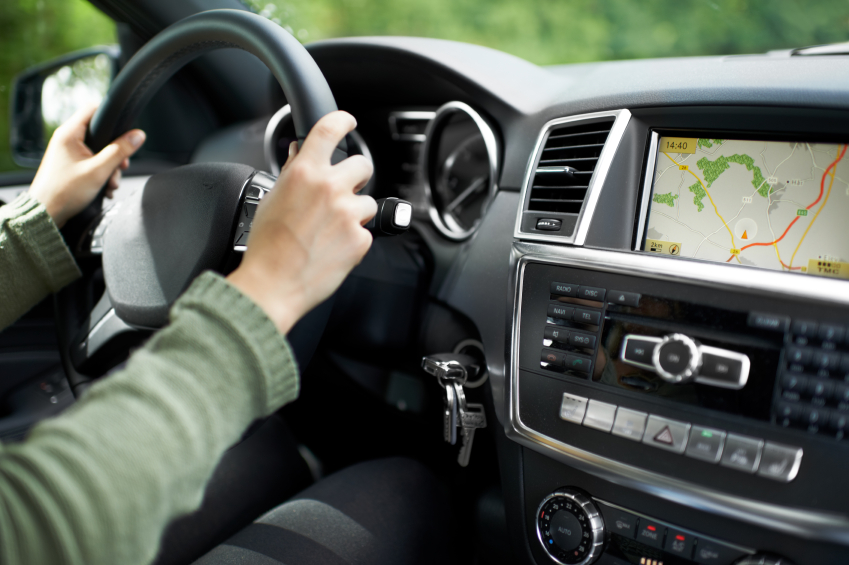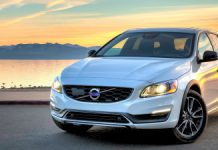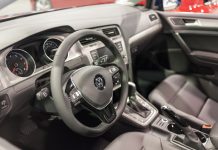
At NerdWallet, we stick to strict standards of editorial integrity to help you decide with confidence. Many or all of the products featured listed here are from our partners. Here’s how we make money.
It occur in an instant. Maybe your children are arguing within the back seat or it’s pouring rain. You lose control or focus?while driving -?and another car arrives of nowhere.
Ever wish your car could react for you personally? Maybe it can.
The auto market is blooming with futuristic new ways to prevent collisions, check blind spots and alter lanes automatically. The Mercedes-Benz E550 even senses when you’re driving drowsy and alerts you having a coffee cup icon. Welcome to the future.
In newer cars, these safety features – called advanced driver assistance systems, or ADAS – in many cases are contained in the base model. They may be also offered in packages, for example “premium” or “technology,” or as single installations. If they’re not included, upgrading may cost thousands.
“They have the potential to avoid accidents and give you a bit more awareness about what’s going on,” says Edmunds.com senior consumer advice editor Ronald Montoya. “Unfortunately, the bundles are costly packages, and that i don’t wish to tell anyone to waste your money compared to what they need to.”
It’s difficult to keep an eye on everything available and what’s worthwhile when you’re buying a new car. Here?are?some of the most common recent features:
1. Automatic parking
Squeezing into tight spots with other cars zooming past you, while carefully avoiding bumping fenders, can fry anyone’s nerves. Auto-park drivers need only pull up to the car while watching open spot, and their cars use cameras and radar to park themselves. Drivers may still need to switch into reverse and drive, and regulate the brake pedal – however the hard part of twisting in to the spot is looked after.
Automakers have different versions, also known as Park Assistant or Active Parking. Toyota’s Prius can have Intelligent Parking Assist, and the Lexus LS has self-parking that both parallel and angle parks.
2. Adaptive cruise control
Today’s cruise control doesn’t only help you stay at a certain speed – additionally, it uses radar to detect traffic patterns and slows and speeds up accordingly. A driver still sets speed parameters as with normal cruise control but additionally selects just how much distance to leave in the car in-front. Adaptive cruise control is also usually combined with collision warning or automatic braking features.
This feature is ideal for stop-and-go traffic, long trips and jam-packed commutes. But it’s typically one of the priciest ADAS and may cost over $1,000 on its own.
3. Forward collision prevention/automotive emergency braking
Collision avoidance describes a car’s capability to detect an impending collision with another vehicle or large object, and slow or stop before it happens. The machine?can be for highway speeds, but some operate only at lower speeds.
Rear-end collisions are incredibly common, so 20 auto manufacturers committed to standardizing automatic braking on all new vehicles by September 2022.
4. Lane monitoring/lane departure warning
Lane monitoring uses road markings to detect if you are drifting with no turn signal and can alert you with a sound, flashing light or vibration. More advanced systems intervene with corrective steering or braking. The feature?favors highways, as it can have trouble reading country or suburban roads.
Several cars have more complex systems. For example, the Infiniti Q50S has hands-free lane keeping and slows and stops as cars in front of it do.
5. Blind-spot monitoring
Blind-spot monitoring is a favorite ADAS feature nowadays, with lots of shoppers making it a deal-breaking inclusion.
This feature senses cars inside your blind spot and warns you with an audible or visual alert – often a ring of sunshine around your sideview mirror. Some go further: showing camera footage of what’s in your blind spot. Many of the helpful in SUVs and pickup trucks with difficult blind spots.
6. Backup camera
Few features offer such reassurance as the backup camera. It is the horrible truth that 50 children under age 15 are hurt or killed from back-over collisions each week in the U.S.
However, backup cameras are becoming more standardized. Also called rearview cameras, they offer live footage of what’s behind your car, viewable from the screen on your dashboard. As of their 2015 models, Acura, Buick, Honda and Infiniti equipped all vehicles with them, and other automakers are following. Federal rules will require backup cameras on brand new vehicles from 2018.
7. Alertness monitoring
Long trips, bumper-to-bumper traffic and late nights can cause one to get to sleep -?however the mistake can be disastrous. A minimum of 846 people died in 2014 in accidents associated with driving tired, based on the National Highway Traffic Safety Administration.
Automakers are combating this with sensors that detect erratic driving likely caused by tiredness, for example drifting over the road or sudden deceleration. Volvo calls its?Driver Alert Control and warns drivers by having an acoustic warning signal and visual alert. Volkswagen’s Fatigue Detection features perform the same.
Your decision
These features can also add important?safety checks for your driving, but there’s no denying price is still an obstacle. It will take here we are at ADAS being standard, and adding premium packages can cost thousands. However, some car safety features can help you save money on insurance.
For focused drivers with limited funds, they might be less of a necessity. If you are considering a newer model anyway and also have distractions while driving (kids in the back seat, telephone calls, frequent city driving), they could be a life-changing option.
Nicole Arata is a staff writer at NerdWallet, a personal finance website. Email:[email protected].














